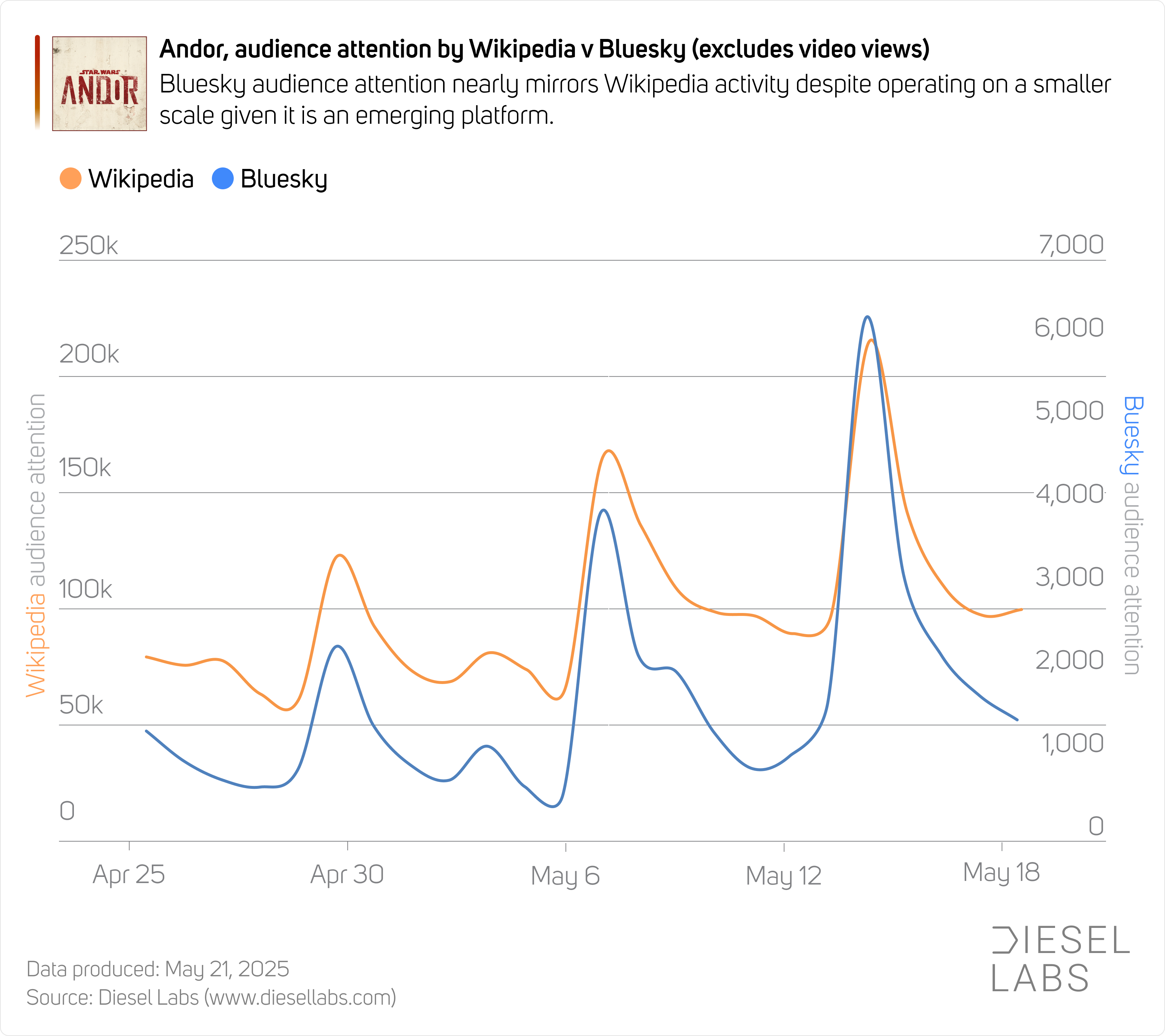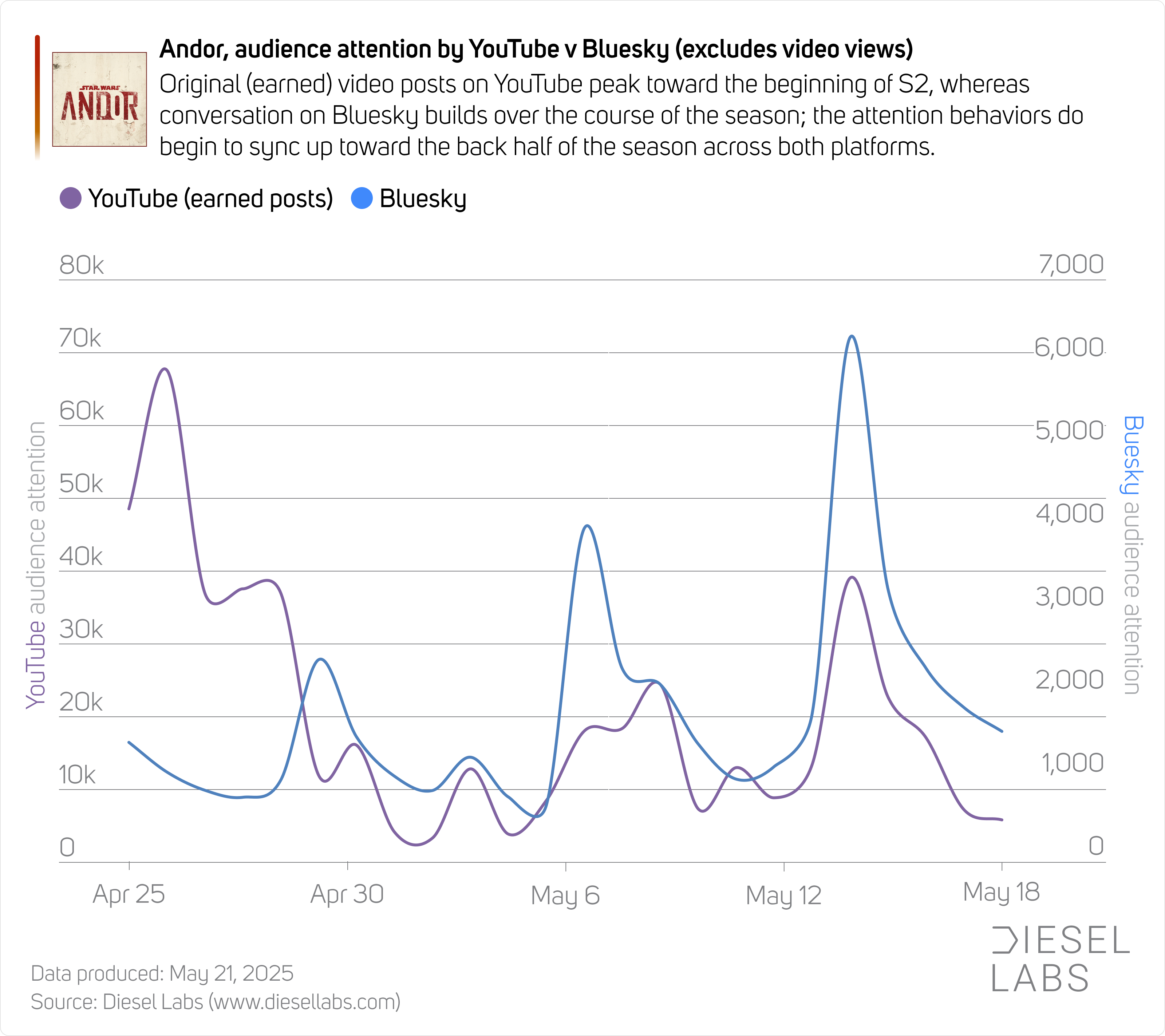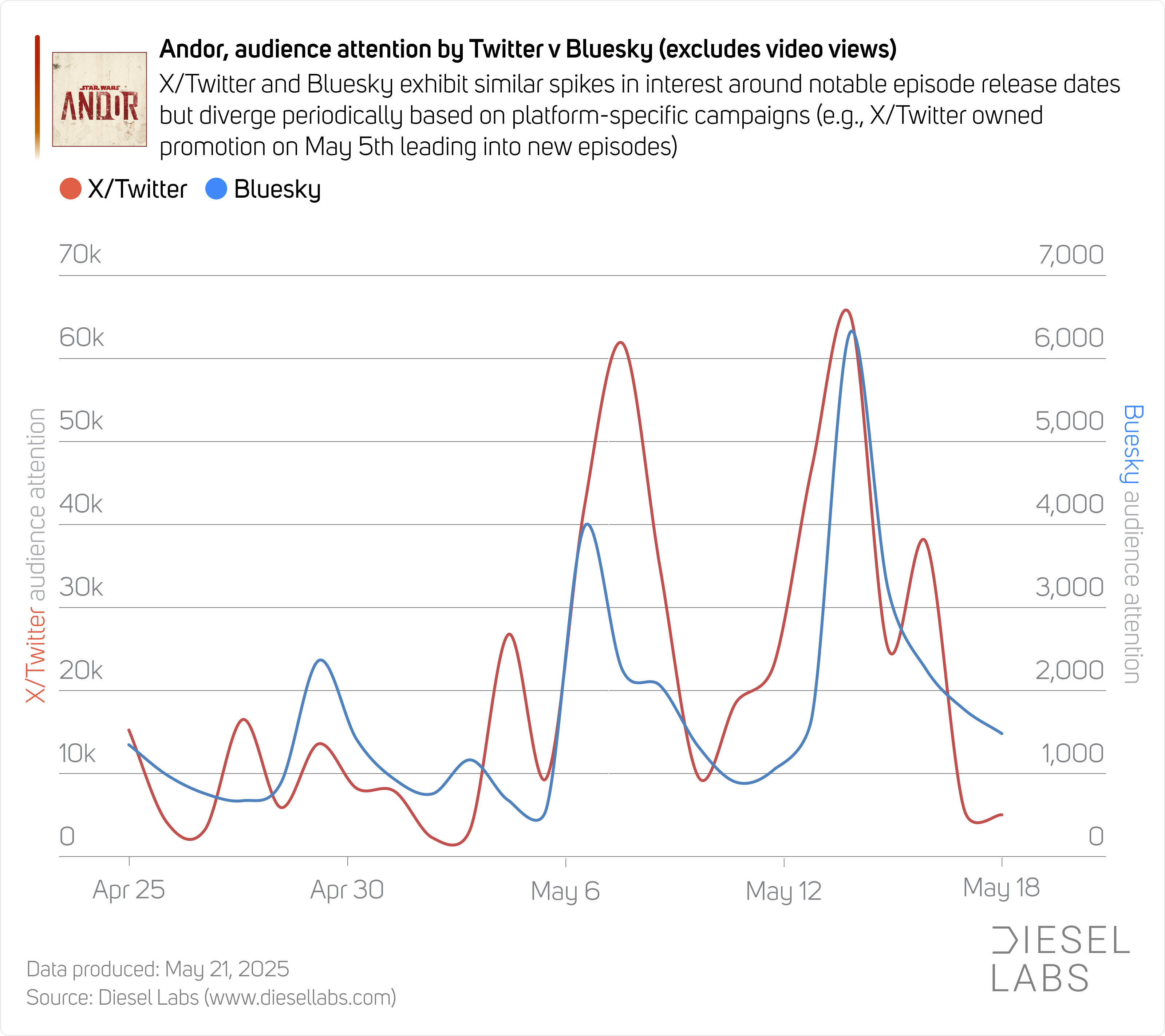Introducing Bluesky Data for Analytics
Diesel Labs is now bringing Bluesky engagement data to our content analytics. Building on foundational models that include data from Facebook, Instagram, YouTube, Twitter/X and Wikipedia, Bluesky is a major new source of audience and consumer engagement trends. Below is an analysis of how Bluesky data behaves relative to other notable platforms for the Disney+ show Andor, which just concluded its second season.

In addition to comparing the behavioral trends across platforms, we also took a look at the nature of the conversation taking place among the various platform audiences. We can see from the topline summaries that audiences do engage differently depending on the environment:
Depth of Analysis: Bluesky and YouTube audiences engage in deeper analysis and discussion, while Twitter is more focused on emotional reactions and general enjoyment.
Focus on Politics: Twitter has the most overt political commentary, whereas other platforms discuss these themes more abstractly.
Community Engagement: YouTube stands out for its interactive fan community, with long threads of discussion and theory-crafting.
Visual Fandom Culture:Instagram audiences (not pictured in the behavioral trends) are uniquely focused on visual appreciation and creative fan expressions, prioritizing aesthetics and imagery over in-depth analysis or debate.

Breaking down the themes by platform, we can see how these key differences continue to manifest within the nuanced conversation.
Bluesky Themes:
Intellectual Analysis and Comparisons (35%)
Appreciation for Tone and Pacing (30%)
Critique of Franchise Fatigue (20%)
Hopes for Future Seasons (15%)
Bluesky Summary:
Bluesky audience engagements tend to be more analytical, with users comparing Andor to prestige television and discussing its place within the broader Star Wars universe. There is a notable focus on the show’s deliberate pacing and mature tone, with many expressing relief at the lack of fan service. Some comments reflect skepticism about the longevity of the franchise, but overall, the tone is optimistic about Andor’s future.
YouTube Themes:
In-depth Episode Reviews and Theories (45%)
Praise for Visuals and Soundtrack (25%)
Criticism of Slow Pace (20%)
Engagement with Fan Community (10%)
YouTube Summary:
YouTube comments are dominated by detailed episode breakdowns, fan theories, and discussions about plot twists. The visual style and music receive particular praise, but there is also a notable contingent that finds the pacing too slow. The platform fosters a strong sense of community, with users responding to each other’s analyses and speculations.
Twitter Themes:
Emotional Reactions and Favorite Moments (40%)
Political and Social Commentary (25%)
Franchise Comparisons (20%)
Calls for More Content Like Andor (15%)
Twitter Summary:
Twitter engagements are more emotionally charged, with users sharing favorite scenes, character arcs, and memorable quotes. There is a significant amount of discussion about the show’s political themes, with some drawing parallels to real-world events. Many users compare Andor favorably to other Star Wars series, and there are frequent calls for more content in a similar vein.

Instagram Themes:
Visual Appreciation & Aesthetic Praise (35%)
Character and Actor Admiration (25%)
Anticipation and Hype (20%)
Community Engagement & Fan Creativity (20%)
Instagram Summary:
Instagram audience engagements for “Star Wars: Andor” are characterized by strong visual appreciation, admiration for characters and actors, and a vibrant, visually expressive fandom culture. These themes differ from other platforms, where discussions are more analytical, text-heavy, and debate-oriented. The Instagram community stands out for its positivity, creativity, and emphasis on visual storytelling.

